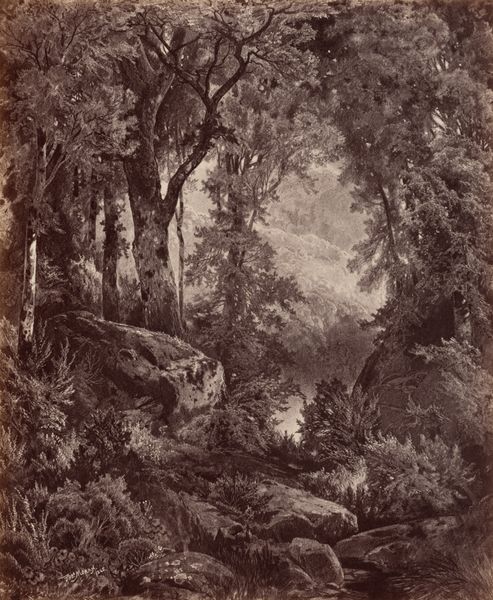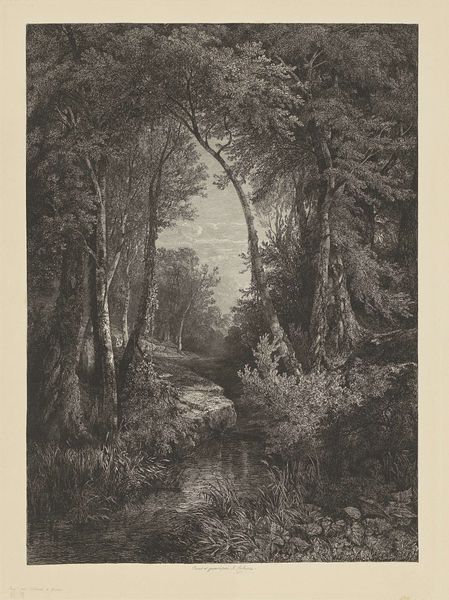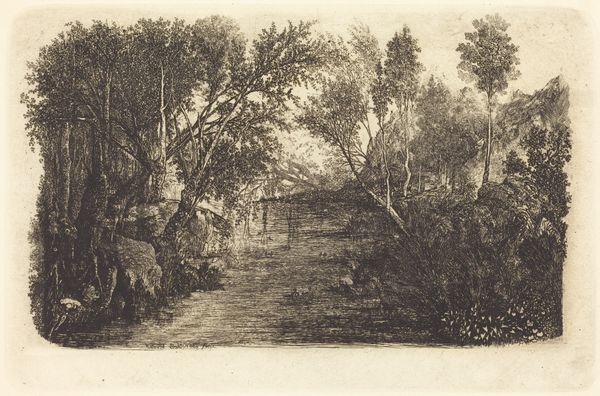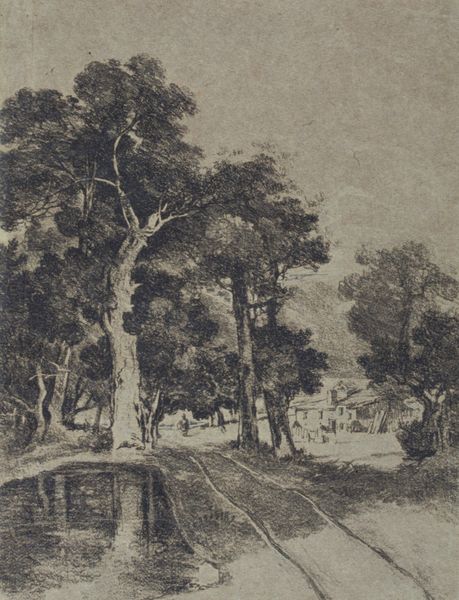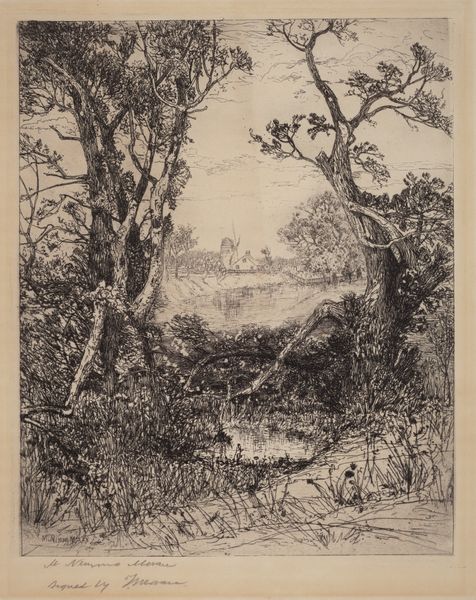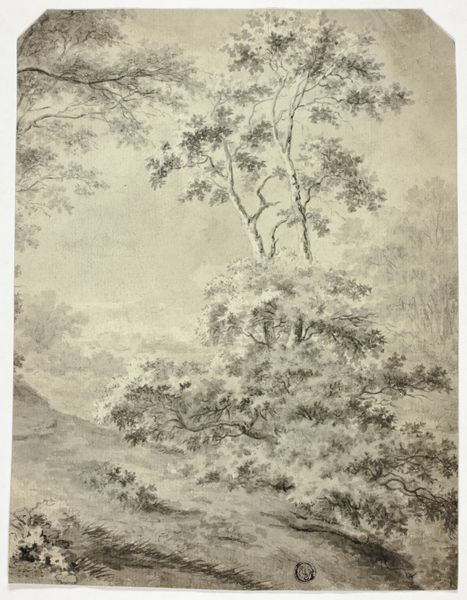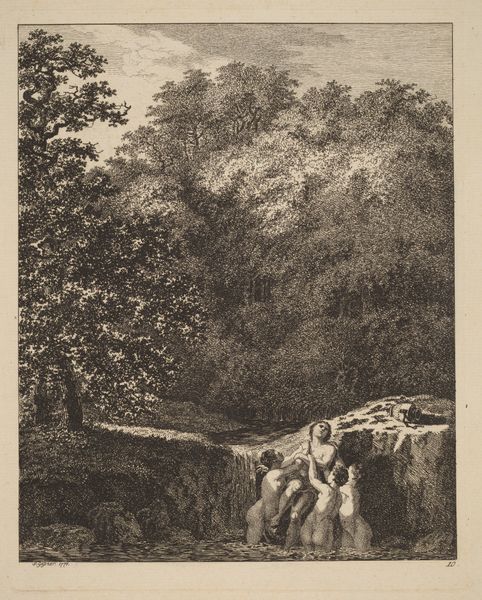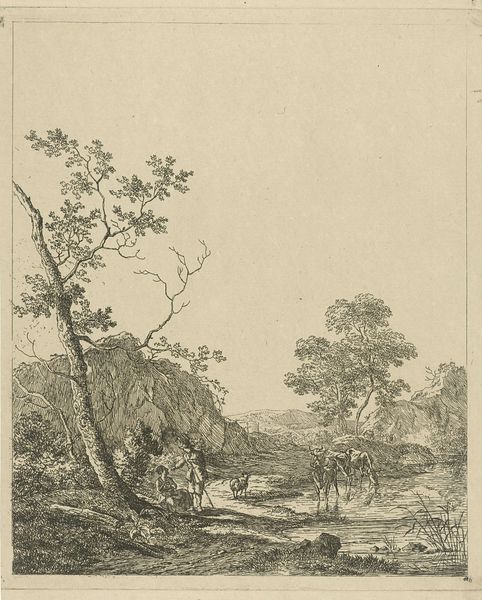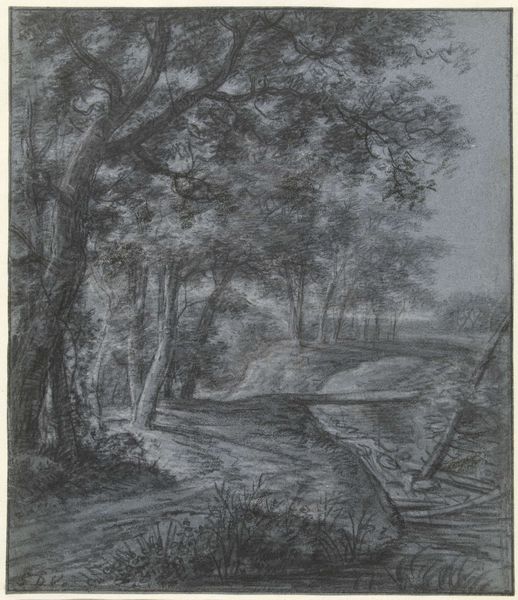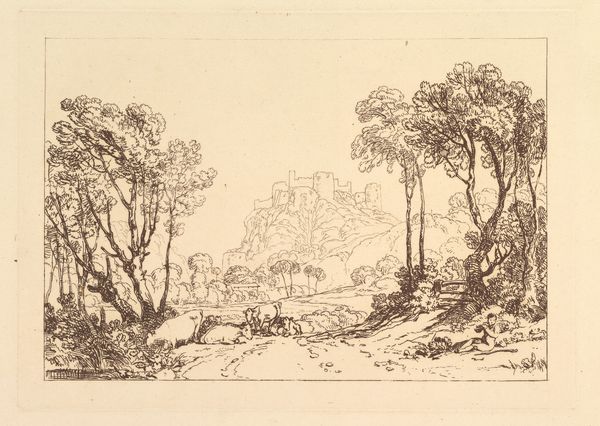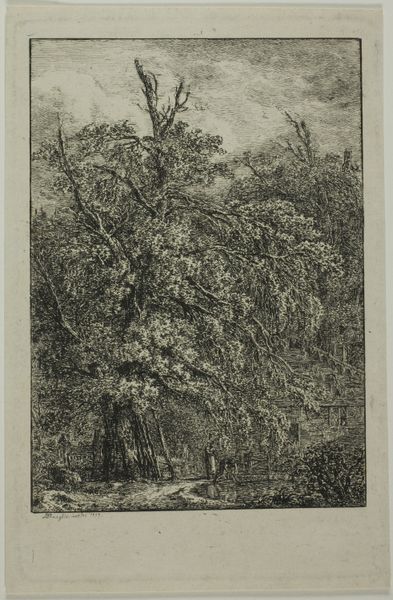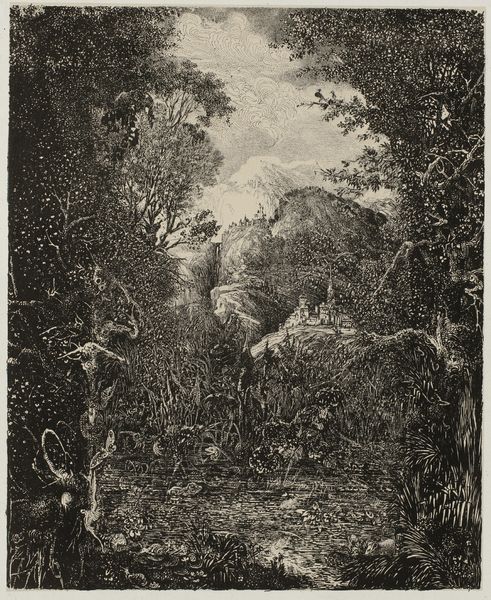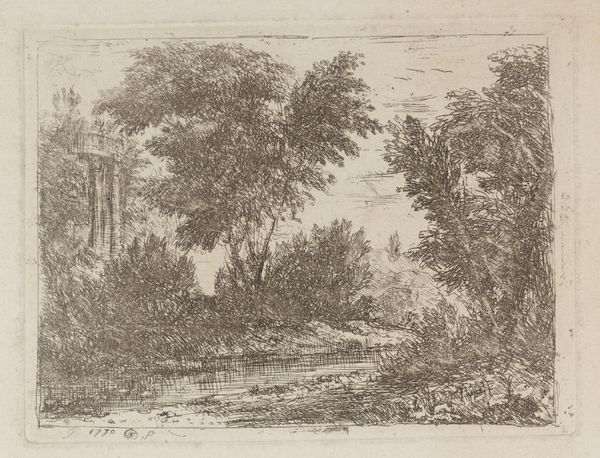
Copyright: Public domain
Curator: I’m struck by the serenity of this piece, "Italian Landscape, Between Ancona and Sinigaglia" by Jan Dirksz Both. It has such a calming, contemplative feel. Editor: Contemplative, yes, but the line work feels more agitated to me. See how the dark ink aggressively sketches the trees’ canopies and rocky crags, contrasting with the lighter wash in the distant valley? Curator: Indeed. Completed around 1645, it captures a very specific moment in the politicization of landscape art. Think of the burgeoning merchant class across Europe—images like these, depicting the Italian countryside, became highly sought-after status symbols. A picturesque memory, you might say. Editor: Status, perhaps, but let's consider the visual rhetoric here. Note how Both uses stark contrasts between light and shadow to direct our eye through the composition. The density of the foreground gradually dissipates to the open, airy vista beyond, creating a distinct spatial depth. Curator: The choice of ink and paper as a medium is also crucial. Its portability allowed artists like Both to sketch preliminary studies while traveling. These images would eventually form the basis of more grandiose painted landscapes destined for wealthy patrons. Editor: Exactly, ink is incredibly raw. I read an honesty there that the finished, polished painting rarely achieves. We witness the artist wrestling with form and texture. Observe his masterful command of varying line thickness. Curator: I find it compelling how these landscapes tapped into a broader cultural fascination. Northern European society’s gaze was consistently drawn south towards the idealized warmth and antiquity of Italy. Both's drawing is both observation and projection of the collective dream. Editor: A dream constructed of lines and washes. Look at the gestural markings that define the foliage. How he lets the white of the paper breathe through it all to create that sense of illuminated form. Curator: Thinking about its impact, one realizes this landscape offered more than just a view—it offered access. A window onto a world largely unavailable to the merchant elite and aspiring bourgeois. Editor: Precisely! Both leverages ink's fluidity to almost mimic light itself. These baroque landscapes have become emblems. Still, you see in that handling the individual sensibility. A reminder art is built from concrete elements. Curator: Agreed. Jan Dirksz Both successfully transformed paper, ink, and personal observation into a cultural artifact deeply embedded within 17th century society. Editor: Well put. He orchestrated those strokes expertly, giving weight and breath to an image pregnant with visual complexity.
Comments
No comments
Be the first to comment and join the conversation on the ultimate creative platform.
